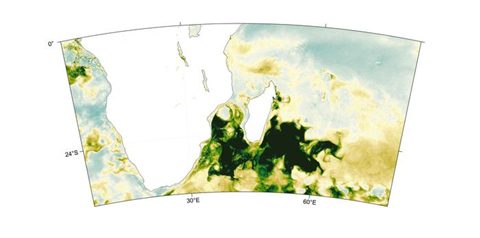A study links an unusual plankton bloom off the coast of Madagascar to drought in Southern Africa. Climate warming has intensified droughts around the world.

When vegetation dies from lack of water, the wind can pick up and carry unprotected soil particles for thousands of kilometers. These dust particles can then act as fertilizer when deposited in seawater.
READ MORE: Soil bacteria prevail despite drought conditions
READ MORE: Dangerous airborne fungus boosted by California droughts
Dionysios Raitsos and colleagues show that dust from drought-stricken Southern Africa caused a bloom of marine phytoplankton off the southeast Madagascar coast from November 2019 through February 2020.
Dust aerosol
The team used standardized anomalies of dust aerosol optical depth from the Copernicus Atmosphere Monitoring Service (CAMS) and in situ coarse mode aerosol optical depth retrieved by a nearby Aerosol Robotic Network (AERONET) station to quantify the density of atmospheric dust aerosols over the Madagascar area through time.
Dust aerosol optical depth anomalies averaged over the bloom region were the highest ever observed during the 17 years CAMS has been collecting data. This dust cloud coincided with heavy rains, which deposited the iron-rich particles into the sea, creating ideal nutrient conditions for phytoplankton growth.
The authors identify multiple potential sources of these iron-rich dust aerosols in Southern Africa, which experienced high air temperature and drought from 2012–2020. According to the authors, as the climate warms, additional phytoplankton blooms caused by the same mechanism are to be expected—and these blooms could take up carbon dioxide from the atmosphere.
Topics
- Algae
- Climate Action
- Copernicus Atmosphere Monitoring Service
- Dionysios Raitsos
- drought
- Healthy Land
- Istituto Nazionale di Oceanografia e Geofisica Sperimentale—OGS
- National and Kapodistrian University of Athens
- National Oceanography Centre
- Ocean Sustainability
- plankton bloom
- Princeton University
- Research News
- UK & Rest of Europe
- university of exeter
- USA & Canada







No comments yet